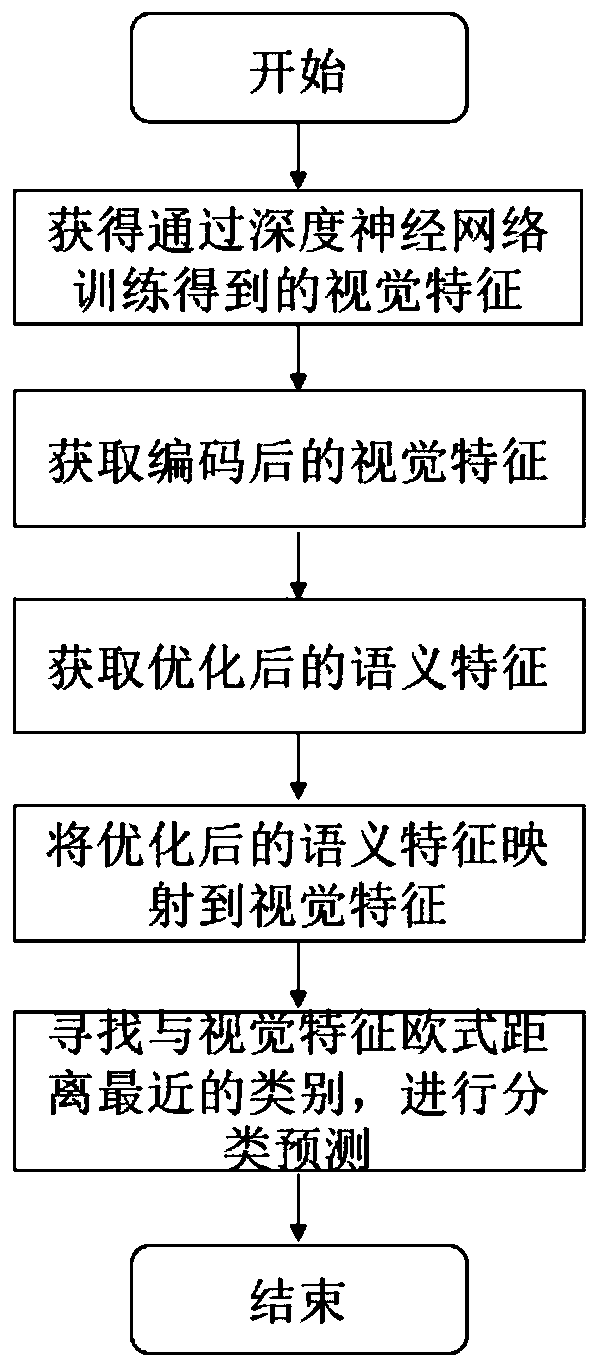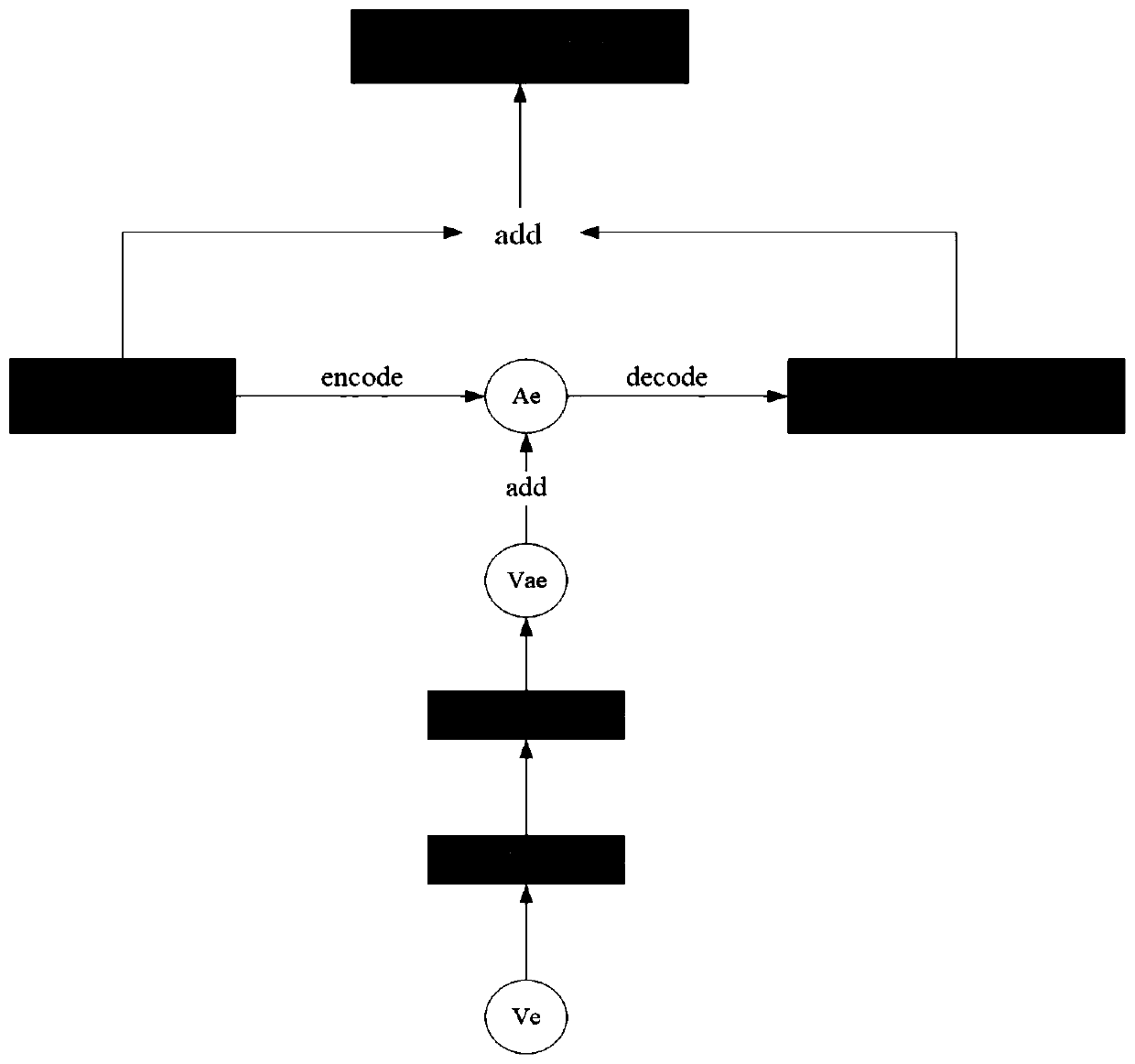An application method of zero-order learning based on correlated double autoencoder
A self-encoder and encoded technology, applied in image encoding, instruments, computer parts, etc., can solve the problem of feature redundancy, and achieve the effect of good classification and recognition accuracy.
- Summary
- Abstract
- Description
- Claims
- Application Information
AI Technical Summary
Problems solved by technology
Method used
Image
Examples
Embodiment Construction
[0050] The present invention will be further described below in conjunction with drawings and embodiments.
[0051] Such as figure 1 As shown, a method based on correlation double autoencoder in zero-shot learning includes the following steps:
[0052] Step (1) obtains the encoded visual features;
[0053] Step (2) obtains the optimized semantic feature;
[0054] Step (3) maps the optimized semantic features to visual features;
[0055] Step (2) is obtained by the following steps: as figure 2 As shown, step A establishes an autoencoder for semantic features, adds the encoded visual features obtained in step (1) to the encoded semantic features, and then decodes the added semantic features; step B The semantic features obtained after decoding are added to the original semantic features to obtain better and more complete semantic features.
[0056] The technical scheme further defined in the present invention is:
[0057]Step (1) is specifically: process the visual featur...
PUM
 Login to View More
Login to View More Abstract
Description
Claims
Application Information
 Login to View More
Login to View More - R&D
- Intellectual Property
- Life Sciences
- Materials
- Tech Scout
- Unparalleled Data Quality
- Higher Quality Content
- 60% Fewer Hallucinations
Browse by: Latest US Patents, China's latest patents, Technical Efficacy Thesaurus, Application Domain, Technology Topic, Popular Technical Reports.
© 2025 PatSnap. All rights reserved.Legal|Privacy policy|Modern Slavery Act Transparency Statement|Sitemap|About US| Contact US: help@patsnap.com



